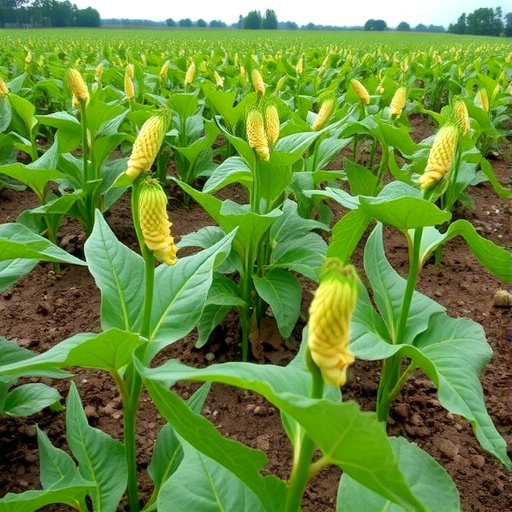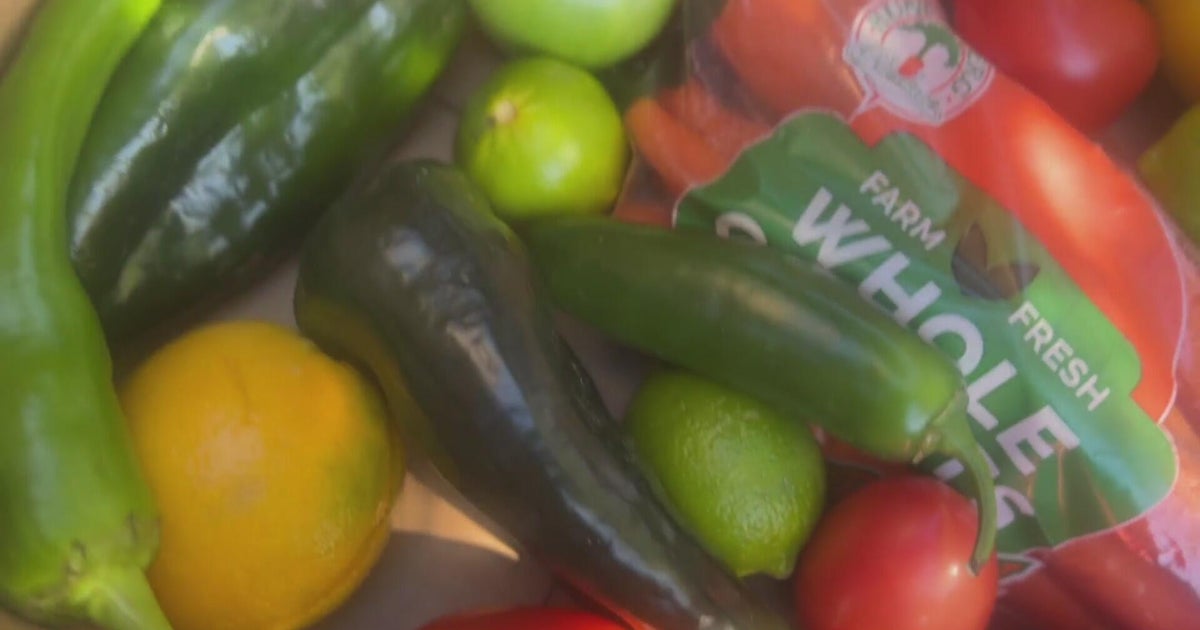Hunger deepens across Africa and the Middle East as climate shocks and conflicts disrupt food supplies – ehn.org

Report on Escalating Food Insecurity in Africa and the Middle East and its Implications for Sustainable Development Goals
Executive Summary
A 2025 United Nations report on The State of Food Security and Nutrition in the World indicates a severe regression in the pursuit of Sustainable Development Goal 2 (Zero Hunger). The findings reveal a sharp increase in hunger rates across Africa and the Middle East during 2024, directly undermining global targets. This report analyzes the primary drivers of this crisis through the lens of the SDGs, highlighting the interconnected challenges posed by conflict, economic instability, and climate change.
- Over 307 million people in Africa and 39 million in the Greater Middle East experienced hunger in 2024, representing a significant setback for SDG 2.
- The crisis is propelled by a convergence of factors that directly contravene multiple SDGs, including SDG 16 (Peace, Justice and Strong Institutions) and SDG 13 (Climate Action).
- The situation in Gaza has deteriorated into the most severe hunger crisis ever recorded by the Integrated Food Security Phase Classification (IPC), demonstrating a total collapse of food systems and a failure to protect vulnerable populations.
- Small-scale farmers, critical to achieving food security, are disproportionately affected by climate change yet receive insufficient support, highlighting a major gap in achieving SDG 13 and SDG 17 (Partnerships for the Goals).
Analysis of Key Drivers and their Impact on SDG 2 (Zero Hunger)
The surge in food insecurity is not attributable to a single cause but rather to a combination of overlapping crises. According to Álvaro Lario, president of the UN’s International Fund for Agricultural Development, the primary drivers are a “mixture between the conflicts, some of the disruption or shocks caused by economic or trade tensions and also the climate shocks.” These factors create a compounding effect that systematically dismantles progress toward SDG 2.
- Conflict and Insecurity: Ongoing wars and political instability, a direct challenge to SDG 16, are a principal cause of hunger. Conflict disrupts food production, destroys infrastructure, blocks supply chains, and displaces populations, leading to acute food shortages as exemplified by the catastrophic situation in Gaza.
- Economic and Trade Tensions: Global economic shocks and trade disputes inflate food prices and disrupt the availability of essential goods. This volatility disproportionately impacts low-income nations and vulnerable communities, pushing millions toward poverty (SDG 1) and hunger (SDG 2).
- Climate Shocks: Extreme weather events, such as droughts and floods linked to climate change, devastate agricultural output. The failure to adequately address climate change undermines the resilience of food systems, making the goal of Zero Hunger increasingly unattainable.
The Intersection of Climate Change, Food Security, and SDG 13 (Climate Action)
The report underscores the critical link between climate inaction and rising hunger. The inability to meet the objectives of SDG 13 (Climate Action) has direct and severe consequences for food security.
- Small-scale farmers, who produce up to 70% of Africa’s food supply and are essential for rural economies, are on the front lines of the climate crisis.
- Despite their crucial role in maintaining food security, these farmers receive less than 1% of total climate finance, leaving them without the resources needed to adapt to changing weather patterns and build resilience.
- This financing gap represents a failure in global partnership (SDG 17) and severely hampers the agricultural sector’s ability to cope with climate-related crop failures, thereby exacerbating food shortages and threatening progress on both SDG 2 and SDG 1 (No Poverty).
Case Study: Gaza and the Reversal of SDG 16 (Peace, Justice and Strong Institutions)
The humanitarian crisis in Gaza serves as an extreme illustration of how the absence of peace and security leads to a complete breakdown of essential systems. The entire population of Gaza is now experiencing acute food insecurity, a condition unprecedented in IPC history. This situation highlights that without progress on SDG 16, other development goals, particularly SDG 2, become impossible to achieve. The destruction of infrastructure and the blockade of humanitarian aid have created a man-made famine, demonstrating the catastrophic human cost when international peace and security fail.
Conclusion: A Call for Integrated Action Across the SDGs
The escalating hunger crisis in Africa and the Middle East is a clear signal that isolated approaches to development are insufficient. The interconnected nature of the drivers—conflict, economic instability, and climate change—demands an integrated strategy that addresses the SDGs as an indivisible whole. Achieving SDG 2 (Zero Hunger) is contingent upon making tangible progress on SDG 13 (Climate Action) by financing climate adaptation for vulnerable farmers, advancing SDG 16 (Peace, Justice and Strong Institutions) to resolve conflicts that fuel famine, and strengthening SDG 17 (Partnerships for the Goals) to ensure stable trade and economic support for at-risk regions.
Which SDGs are addressed or connected to the issues highlighted in the article?
-
SDG 2: Zero Hunger
This is the most central SDG, as the article’s main focus is the sharp rise in hunger and food insecurity in Africa and the Middle East. It explicitly mentions the “State of Food Security and Nutrition” report, hunger statistics, and the crisis in Gaza.
-
SDG 13: Climate Action
The article directly attributes the hunger crisis to “extreme weather,” “climate shocks,” “droughts and floods linked to climate change.” It also highlights a failure in climate action by noting that small-scale farmers receive “less than 1% of climate finance” despite their vulnerability.
-
SDG 16: Peace, Justice and Strong Institutions
The article identifies “war” and “conflicts” as a primary driver of hunger. The situation in Gaza, described as the “worst recorded hunger crisis in IPC history” due to conflict, directly links the lack of peace to catastrophic food insecurity.
-
SDG 1: No Poverty
The article discusses how “overlapping crises… hit vulnerable communities hardest” and how hunger is driven by economic shocks. Extreme hunger is a primary dimension of poverty, so the issues discussed are intrinsically linked to the goal of eradicating poverty.
What specific targets under those SDGs can be identified based on the article’s content?
-
SDG 2: Zero Hunger
- Target 2.1: End hunger and ensure access to safe, nutritious, and sufficient food. The article’s core data on the “307 million Africans and 39 million people in the Greater Middle East” facing hunger and the entire population of Gaza experiencing “acute food insecurity” directly relates to this target.
- Target 2.3: Double the agricultural productivity and incomes of small-scale food producers. The article emphasizes the crucial role of small-scale farmers, who “produce a third of global food and up to 70% of Africa’s supply,” but notes they “lack the resources to adapt,” implying that supporting them is critical to achieving food security.
- Target 2.4: Ensure sustainable food production systems and implement resilient agricultural practices. The mention of “droughts and floods” wiping out crops and the need for farmers to adapt to “climate shocks” points directly to the necessity of building resilient agricultural systems.
-
SDG 13: Climate Action
- Target 13.1: Strengthen resilience and adaptive capacity to climate-related hazards. The article highlights the failure to meet this target by describing how “droughts and floods linked to climate change wipe out crops” and that small farmers, who are key to the food supply, “lack the resources to adapt.”
- Target 13.a: Mobilize climate finance. The article provides a specific data point related to this target by stating that small-scale farmers “receive less than 1% of climate finance,” indicating a significant gap in funding for adaptation in the agricultural sector.
-
SDG 16: Peace, Justice and Strong Institutions
- Target 16.1: Significantly reduce all forms of violence and related death rates everywhere. The article identifies “war” and “conflicts” as one of the “three main drivers” of the hunger crisis, with the situation in Gaza serving as a stark example of how conflict directly undermines food security and human well-being.
-
SDG 1: No Poverty
- Target 1.5: Build the resilience of the poor and those in vulnerable situations and reduce their vulnerability to climate-related extreme events and other shocks. The article explains how food insecurity results from “overlapping crises” (economic, political, environmental) that “hit vulnerable communities hardest,” directly aligning with the focus of this target.
Are there any indicators mentioned or implied in the article that can be used to measure progress towards the identified targets?
-
For SDG 2 (Zero Hunger)
- Indicator 2.1.1 (Prevalence of undernourishment) & 2.1.2 (Prevalence of moderate or severe food insecurity): The article directly cites data from the “UN’s 2025 State of Food Security and Nutrition in the World report,” providing figures on the number of people facing hunger (307 million in Africa, 39 million in the Middle East). It also refers to the Integrated Food Security Phase Classification (IPC) scale in relation to Gaza, which is a tool used to measure these indicators.
-
For SDG 13 (Climate Action)
- Indicator 13.a.1 (Amounts provided and mobilized in United States dollars per year for climate finance): The article provides a specific, albeit negative, indicator of progress by stating that “Small-scale farmers… receive less than 1% of climate finance.” This figure directly measures the distribution and allocation of climate finance, which is a key component of this indicator.
-
For SDG 1 (No Poverty)
- Indicator 1.5.1 (Number of deaths, missing persons and directly affected persons attributed to disasters per 100,000 population): While not providing specific numbers, the article implies this indicator by linking the hunger crisis (affecting over 346 million people) directly to disasters like “war,” “trade tensions,” and “extreme weather.” The number of people pushed into hunger serves as a measure of those “directly affected” by these converging shocks.
Table of SDGs, Targets, and Indicators
| SDGs | Targets | Indicators Identified in Article |
|---|---|---|
| SDG 2: Zero Hunger |
2.1: End hunger and ensure access for all people to safe, nutritious and sufficient food.
2.3: Double the agricultural productivity and incomes of small-scale food producers. |
Implied Indicator 2.1.1/2.1.2: The number of people facing hunger (307 million in Africa, 39 million in the Middle East) and the use of the IPC scale for Gaza’s food crisis.
Implied Indicator: The percentage of food supply produced by small-scale farmers (up to 70% in Africa) highlights their importance, against which their lack of resources can be measured. |
| SDG 13: Climate Action |
13.1: Strengthen resilience and adaptive capacity to climate-related hazards.
13.a: Mobilize climate finance from developed countries. |
Implied Indicator: The impact of climate shocks, such as “droughts and floods” that “wipe out crops,” serves as a negative indicator of resilience.
Indicator 13.a.1: The specific statistic that small-scale farmers “receive less than 1% of climate finance.” |
| SDG 16: Peace, Justice and Strong Institutions | 16.1: Significantly reduce all forms of violence and related death rates. | Implied Indicator: The identification of “war” and “conflicts” as a primary driver of hunger, with the Gaza crisis cited as a direct consequence of conflict. |
| SDG 1: No Poverty | 1.5: Build the resilience of the poor and reduce their vulnerability to shocks. | Implied Indicator 1.5.1: The number of people in “vulnerable communities” pushed into hunger by economic, political, and environmental shocks. |
Source: ehn.org

What is Your Reaction?
 Like
0
Like
0
 Dislike
0
Dislike
0
 Love
0
Love
0
 Funny
0
Funny
0
 Angry
0
Angry
0
 Sad
0
Sad
0
 Wow
0
Wow
0



























;Resize=805#)




















































